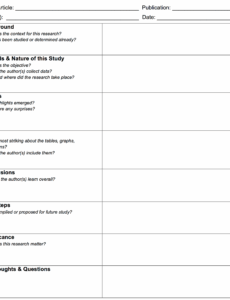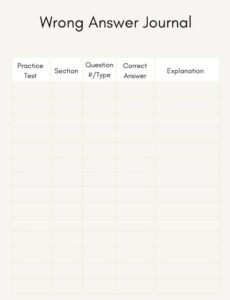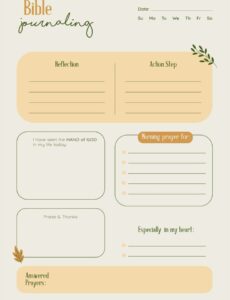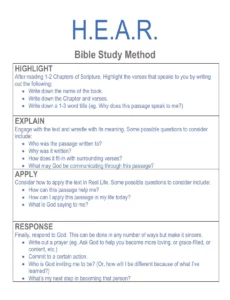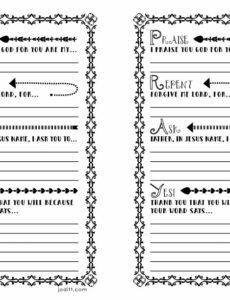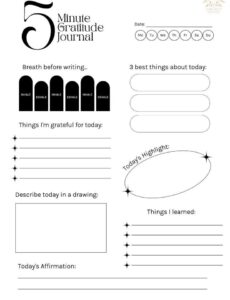Have you ever wondered how to help young learners truly grasp math concepts, not just memorize formulas? It’s a common challenge in elementary school, where the foundations of mathematical thinking are laid. A fantastic way to encourage deeper understanding, problem-solving skills, and self-reflection is through the consistent use of math journals. These journals become a personalized space for students to explore their mathematical journey, articulate their thoughts, and even identify where they might be struggling.
Thinking about starting a math journal practice in your classroom or at home can feel a bit daunting, especially when considering how to structure it effectively. That’s where a well-designed elementary school math journal template comes into play. It provides a clear framework, making it easy for students to organize their thoughts and for educators to assess their comprehension, transforming abstract math ideas into concrete, expressible understanding.
Unlocking Deeper Understanding with Math Journals
Math journals are so much more than just another notebook; they are powerful tools that shift the focus from merely finding the right answer to understanding the process behind it. Instead of students passively receiving information, they actively engage with the math, reflecting on what they learned, how they learned it, and even questions that arise along the way. This active engagement is crucial for developing robust mathematical reasoning and problem-solving abilities that will serve them well beyond their elementary years. Imagine a student explaining their thought process for solving a word problem in their own words – that’s the kind of profound learning a math journal fosters.
For educators, these journals offer invaluable insights into each student’s unique learning journey. By reading their entries, teachers can pinpoint misconceptions, identify areas where extra support is needed, and tailor instruction more effectively. It’s like having a window into their mathematical minds, allowing for more targeted teaching and differentiation within the classroom. Plus, journals provide an excellent portfolio of student growth over time, showcasing their developing confidence and mastery in mathematics.
The beauty of a math journal also lies in its ability to support various learning styles. Visual learners can draw diagrams, kinesthetic learners can explain steps as if teaching someone else, and verbal learners can articulate their reasoning in written form. It’s a truly inclusive practice that empowers every student to express their mathematical understanding in a way that resonates with them. It builds confidence and reduces the anxiety often associated with math, making the subject approachable and even enjoyable.
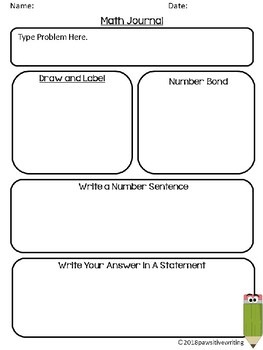
A good template ensures that students cover all the essential aspects of their mathematical thinking without feeling overwhelmed by a blank page. It guides them through the process, prompting them to think critically about the problem, their strategy, and their final solution. This structure is especially beneficial for younger elementary students who are still developing their writing and organizational skills.
Key Elements of an Effective Math Journal Entry
- Date and Title: Helps organize entries chronologically and by topic.
- The Math Problem or Prompt: Clearly states what the student is addressing.
- My Thinking Process/Show Your Work: Space for drawings, calculations, and strategies.
- My Solution: The final answer to the problem.
- My Reflection/What I Learned: Students explain their understanding, challenges, or new insights.
- New Questions: Encourages further inquiry and critical thinking.
Making Math Journals Fun and Engaging
Encouraging creativity within the journal can make it even more impactful. Allow students to use colored pencils, stickers, or even draw cartoons to illustrate their understanding. Creative prompts, such as “If math were an animal, what would it be and why?” can spark imaginative thinking and connect math to other parts of their world, ensuring that journal time is something they look forward to.
Crafting Your Ideal Elementary School Math Journal Template
Once you recognize the profound benefits of math journaling, the next step is to consider how to implement it effectively. A well-structured elementary school math journal template is key to a successful journaling practice, providing the scaffolding that elementary students need to articulate their mathematical thinking consistently. Designing one doesn’t have to be complicated; it’s about creating a framework that encourages clear communication and deep reflection without stifling creativity.
When developing your template, think about the age and developmental stage of your students. For younger students in kindergarten or first grade, a template might include more space for drawing and fewer lines for writing, perhaps with simple prompts like “What did you do?” and “What did you learn?” As students progress into upper elementary grades, the template can evolve to include more structured sections for vocabulary, multi-step problem explanations, and self-assessment rubrics.
Consider the types of math activities you’ll be using journals for. Will it be for problem-solving, vocabulary building, explaining concepts, or a combination? Your template should reflect these uses. For instance, if you’re focusing on explaining how to perform an operation, the template might have sections like “What is the problem?” “How I solved it,” and “Why my strategy worked.” This adaptability ensures the journal remains a relevant and powerful learning tool throughout the school year.
An effective template also incorporates elements that make assessment easier for you and more informative for the student. Providing a small space for students to self-assess their understanding (e.g., “I got it,” “I need more practice,” “I’m confused”) can be incredibly powerful. It teaches them to monitor their own learning and gives you immediate feedback on where your students stand on a particular concept.
Essential Sections to Include in Your Template
- Header with Date and Topic: Standard organizational elements.
- Problem Space: A dedicated area for writing out or pasting the math problem.
- Work Area: Ample space for students to show all steps of their work, including drawings, equations, and diagrams.
- Explanation Box: Lined space for students to write out their thinking process in words, perhaps prompted by “My plan was…” or “I know this because…”
- Vocabulary Corner: A small section to define new math terms encountered.
- Reflection Questions: Prompts like “What was challenging about this problem?” or “How could I use this math in real life?”
- Self-Assessment Scale: A simple scale or rubric for students to rate their own understanding or effort.
Remember, the best template is one that is used consistently and evolves with your students’ needs. It empowers them to become active participants in their mathematical education, fostering a love for learning and a deeper understanding of numbers and concepts.
Embracing math journals in your elementary classroom or home learning environment is a brilliant step towards cultivating truly reflective and confident mathematicians. By providing a structured yet flexible framework, you’re not just assigning another task; you’re building a habit of critical thinking and clear communication that extends far beyond the math lesson. It’s a journey of discovery, where every student gets to articulate their unique path to understanding.
Ultimately, equipping young learners with the tools to express their mathematical ideas freely and thoughtfully prepares them for complex challenges and encourages a lifelong appreciation for the subject. So go ahead, introduce those math journals, and watch as your students transform from passive learners into active, engaged, and eloquent mathematical thinkers.
